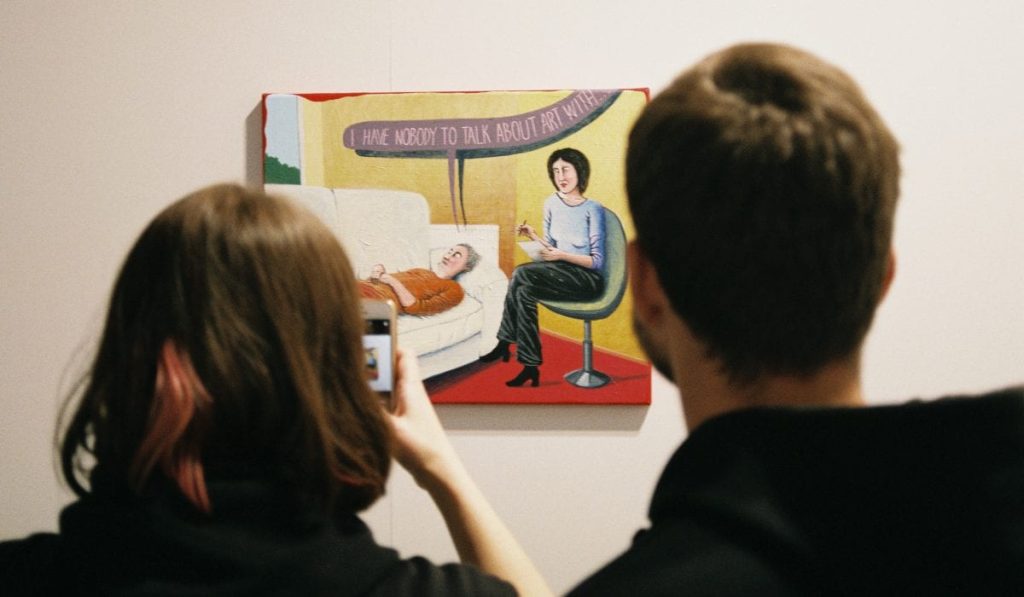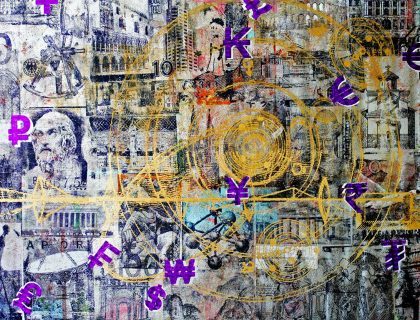
The digital era has changed the way that art is bought and sold, and it’s now easier than ever to sell your artwork on your own. But, if you want to start selling your work directly, you need more than a website and a payment processing account. Whether you sell your work for $100 or $10,000, you’re now operating as a business and should start acting like one. This means creating and maintaining documentation such as an artwork bill of sale, copyright certificate, and certificate of authenticity to protect you, your business, and your work.
In order to sell your artwork, you will need to provide a Bill of Sale. The Bill of Sale, or invoice, is one of your most important business documents. Artwork in physical form is considered personal property, and therefore a transfer of title will be necessary in the form of a Bill of Sale. This also functions as a record of the transaction for both the artist and the buyer of the artwork and will be used later on when you file taxes. Specific requirements for invoices can vary from state to state, so be sure to double-check with your local or state government when drawing up your artist Bill of Sale.

An Artwork Bill of Sale is your opportunity to set some terms about the ownership of your work.
You can download Artrepreneur’s template for an Artwork Bill of Sale.
Despite slight variations in local requirements, a Bill of Sale should include the following information:
Although not a requirement, it’s a good idea to have proper documentation of copyright and reproduction rights in your Bill of Sale to protect against legal issues that could pop up in the future. Include information about the copyright and reproduction rights of the work sold to inform buyers that they are only purchasing the rights to the physical piece of artwork.
You may also want to add terms to your Bill of Sale, such as “all sales are final,” or include a return policy. Your policy can state the length of time in which the work can be returned and under what conditions. This can include the method of that return (i.e., using an insured carrier) and any other conditions you require to ensure that the work is returned promptly and undamaged.
See also Use Video Storytelling to Energize Your AudienceBoth artist and collector should sign and date the artist’s bill of sale to demonstrate that both are in agreement with the terms of the sale. Retain your copy!
Technically speaking, a copyright is autom atically put in place the moment that a piece of artwork is created. However, registering the work will make any potential legal disputes much easier in the future by providing a public record that serves as simple proof that the artwork is yours. Registering is simple and can be done online with the Copyright Office of the U.S. Library of Congress . All you need to do is fill out a registration form on the electronic Copyright Office page and pay the fee. Here is how it works.
Copyright is automatic and provides the copyright holder with the exclusive right to:
As soon as you create your artwork, you will have these rights. Copyright registration is not required (it only provides extra ben efits). You also don’t need a copyright notice (i.e. © Jim Smith 2016). You may want to include language on the Bill of Sale that establishes who owns the copyright in the image, which is different from the physical work.
An example of a copyright clause to include is:
Copyright and Reproduction . The Artist reserves all reproduction rights, including the right to claim statutory copyright in the Work. The Work may not be photographed, sketched, painted, or reproduced in any manner whatsoever without the express written consent of the Artist.
Art Business Journal’s Legal Section has excellent information, advice, and resources on all art law matters, including explaining copyright and reproduction rights in terms that are easy to understand.
You should have a Certificate of Authenticity for all finished artwork that is sold. This document functions as proof that the artwork is an authentic creation of the artist who has signed and dated it. Artists can author this document themselves.
Typically, a Certificate of Authenticity is issued when an artwork is sold at a gallery, so it is validated by a trusted third party. If you sell your work yourself, you can look into getting a third-party verification certificate from companies like Monograph or Verisart. Verisart creates secure digital certificates for art and binds them to detailed provenance records.
See also Tips for Negotiating an Art Consignment Agreement with a GalleryA certificate of authenticity is particularly important for serious art collectors since these collectors are likely to buy your work for two reasons: They have a personal connection to your works, and they believe in its potential as a financial investment. In the best-case scenario, a few years down the road, you become a sought-after artist, and the buyer considers flipping one of your pieces. The certificate of authenticity will ensure that they have genuine It also can be used in the future to value your estate for insurance purposes and any other legal matters that may arise with your work.
A valid Certificate of Authenticity must include specific details about the artwork. The more information you can provide, the better, but the essential content should include:
Now that you have all of your art business documents, once a purchase has been made, create a paper and digital file to store them. Make sure you have redundancy in your files and record keeping. This means having your files handy in multiple forms, in multiple ways. The Studio Protector from CERF+ has great tips on documentation and safe storage, including frequently backing up your records digitally and in the cloud and having your records in a safe offsite location in case of an emergency. Without proper records, it can be difficult to file an insurance claim if you indeed have insurance for your business or artwork.
Your documentation can be created and signed digitally with e-signatures or via hard copy. While you can search online for templates and examples of the documents discussed above, they’re not always geared towards artists and often lack the fields that artists need to enter important information. A great resource for art business documents is Tad Crawford’s collection of Business and Legal Forms for fine and commercial artists.
What paperwork have you used to sell your work? What systems have worked best for you to keep records as a business owner?
Nicole is a veteran arts and culture journalist. Her work has appeared in Reuters, VICE, Hyperallergic, Univision, and more.
 SEO for Artists: A Primer for Drawing New Audiences
SEO for Artists: A Primer for Drawing New Audiences 8 Reasons Why You’re Not Successful Selling Artwork
8 Reasons Why You’re Not Successful Selling Artwork


Thank you Nicole ❤️ Such valuable & pertinent information simplified!
Reply Pauline September 18, 2022 at 8:08 pmThis is great info; however, on CoAs, you may want to mention that any artist can create its own CoA which will be valid as long as it contains the information needed in a CoA. The CoA provider, Verisart, mention in this article, is an OPTION if you want someone else to do it for you, but the CoA won’t be more or less valid. The QR codes shown in the examples by Verisart are also an item you can purchase and use to scan to pull the data pertaining to the art piece, but in absence of an official Registry for the art, the QR code does not guarantee traceability.
This site uses Akismet to reduce spam. Learn how your comment data is processed.